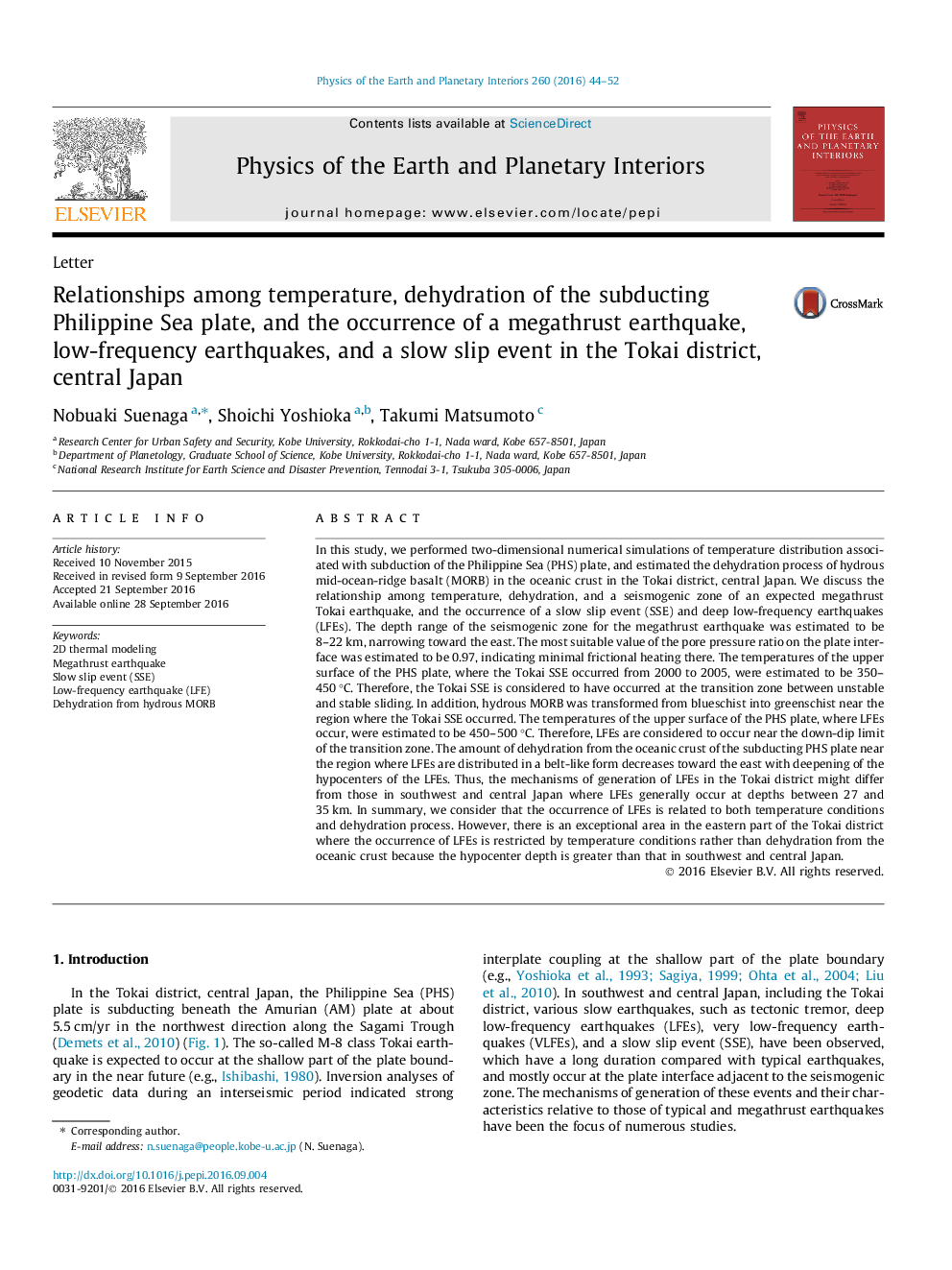| کد مقاله | کد نشریه | سال انتشار | مقاله انگلیسی | نسخه تمام متن |
|---|---|---|---|---|
| 6447439 | 1641481 | 2016 | 9 صفحه PDF | دانلود رایگان |
عنوان انگلیسی مقاله ISI
Relationships among temperature, dehydration of the subducting Philippine Sea plate, and the occurrence of a megathrust earthquake, low-frequency earthquakes, and a slow slip event in the Tokai district, central Japan
ترجمه فارسی عنوان
روابط بین دما، کم آبیاری صفحات دریایی فیوپین، وقوع یک زلزله مگاتراست، زلزله با فرکانس پایین و یک رویداد لغزشی آهسته در منطقه توکیای مرکزی ژاپن
دانلود مقاله + سفارش ترجمه
دانلود مقاله ISI انگلیسی
رایگان برای ایرانیان
کلمات کلیدی
موضوعات مرتبط
مهندسی و علوم پایه
علوم زمین و سیارات
فیزیک زمین (ژئو فیزیک)
چکیده انگلیسی
In this study, we performed two-dimensional numerical simulations of temperature distribution associated with subduction of the Philippine Sea (PHS) plate, and estimated the dehydration process of hydrous mid-ocean-ridge basalt (MORB) in the oceanic crust in the Tokai district, central Japan. We discuss the relationship among temperature, dehydration, and a seismogenic zone of an expected megathrust Tokai earthquake, and the occurrence of a slow slip event (SSE) and deep low-frequency earthquakes (LFEs). The depth range of the seismogenic zone for the megathrust earthquake was estimated to be 8-22 km, narrowing toward the east. The most suitable value of the pore pressure ratio on the plate interface was estimated to be 0.97, indicating minimal frictional heating there. The temperatures of the upper surface of the PHS plate, where the Tokai SSE occurred from 2000 to 2005, were estimated to be 350-450 °C. Therefore, the Tokai SSE is considered to have occurred at the transition zone between unstable and stable sliding. In addition, hydrous MORB was transformed from blueschist into greenschist near the region where the Tokai SSE occurred. The temperatures of the upper surface of the PHS plate, where LFEs occur, were estimated to be 450-500 °C. Therefore, LFEs are considered to occur near the down-dip limit of the transition zone. The amount of dehydration from the oceanic crust of the subducting PHS plate near the region where LFEs are distributed in a belt-like form decreases toward the east with deepening of the hypocenters of the LFEs. Thus, the mechanisms of generation of LFEs in the Tokai district might differ from those in southwest and central Japan where LFEs generally occur at depths between 27 and 35 km. In summary, we consider that the occurrence of LFEs is related to both temperature conditions and dehydration process. However, there is an exceptional area in the eastern part of the Tokai district where the occurrence of LFEs is restricted by temperature conditions rather than dehydration from the oceanic crust because the hypocenter depth is greater than that in southwest and central Japan.
ناشر
Database: Elsevier - ScienceDirect (ساینس دایرکت)
Journal: Physics of the Earth and Planetary Interiors - Volume 260, November 2016, Pages 44-52
Journal: Physics of the Earth and Planetary Interiors - Volume 260, November 2016, Pages 44-52
نویسندگان
Nobuaki Suenaga, Shoichi Yoshioka, Takumi Matsumoto,
